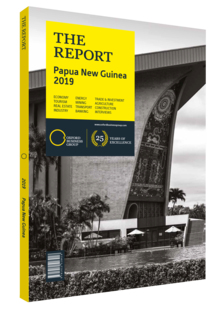Stephanie Fahey, Chief Executive, Austrade: Interview

Interview: Stephanie Fahey
How would you characterise Australia’s relationship with Papua New Guinea from a trade perspective?
STEPHANIE FAHEY: When visiting Port Moresby, it is easy to notice the presence of a large number of Australian companies, many of which have been operating in PNG for a long time. Australia’s trade relations with PNG are worth around A$6bn ($4.4bn) per year and Australian companies have some A$18bn ($13.3bn) invested in PNG.
More than 4600 Australian companies formally export goods to PNG, and others have created their own ties across the Torres Strait. Australia is both PNG’s main export market and its largest source for imports. PNG deserves more attention from Australia’s emerging exporters as its population and purchasing power is set to increase significantly. PNG is now on the brink of the next cycle of resource development with new, upcoming liquefied natural gas and mining projects, which have been attracting Australian investors. The Coral Sea Cable, a 4700-km fibre-optic submarine cable network, delivered by Australia in partnership with PNG and the Solomon Islands, is generating further interest. The Australian government also wants to increase its presence in the Pacific and is setting up a A$2bn ($1.5bn) Australian Infrastructure Financing Facility.
What impact did the APEC Summit 2018 have on PNG’s reputation as a destination for investment?
FAHEY: APEC focused the world’s attention on PNG and raised its profile among potential investors. APEC also demonstrated PNG’s progress in becoming a young but stable, robust and reliable democracy. This was highlighted by the decision to focus the APEC Summit 2018 on the digital economy, which ties in with development opportunities in PNG. APEC’s success also acted as a stepping stone for 2019, when we hope the country will lay substantial foundations for its future growth.
In order to achieve this, PNG will need investment from the private sector. One of Australia’s most important commitments to PNG’s infrastructure is the Papua New Guinea Electrification Partnership, first announced at the APEC Summit 2018. Access to electricity is critical to driving improved living standards. Companies also need this infrastructure, which is the reason that Australia, Japan, New Zealand and the US are supporting PNG in achieving its aim of increasing electricity coverage to 70% of the population by 2030. Australia’s commitment to play a strong supporting role reinforces not only our commitment to PNG, but also our long-standing relationship with the country.
In what ways can the Pacific Island states work together to improve their economic prospects?
FAHEY: For most Pacific Island states, growth will be constrained by a combination of remoteness, limited land and resource bases, the dispersal of people, and environmental fragility. The Pacific Agreement on Closer Economic Relations Plus, which is expected to come into force in the second half of 2019, will encourage stronger trade and investment relations, and increase business confidence.
Meanwhile, Australia is working with PNG to satisfy unmet demand in our labour market, as well as investing in skills and helping countries to capture growth potential in a range of sectors. Partnerships between Australian businesses and our neighbours will help the Pacific region to have benefits for all involved.
Many countries in the Pacific have limited capacity to respond individually to security challenges such as transnational crime, natural disasters, climate change and outbreaks of infectious diseases. Australia will continue to strengthen the capacity of the Pacific Islands to respond to climate change. We are providing A$300m ($221.7m) by 2023 to support a range of areas, including climate science and data analysis. We also use our investment to secure funding from multilateral banks for infrastructure development. Economic integration within the region, and with Australia and New Zealand, is vital to the prospects of PNG and the broader Pacific.
You have reached the limit of premium articles you can view for free.
Choose from the options below to purchase print or digital editions of our Reports. You can also purchase a website subscription giving you unlimited access to all of our Reports online for 12 months.
If you have already purchased this Report or have a website subscription, please login to continue.

